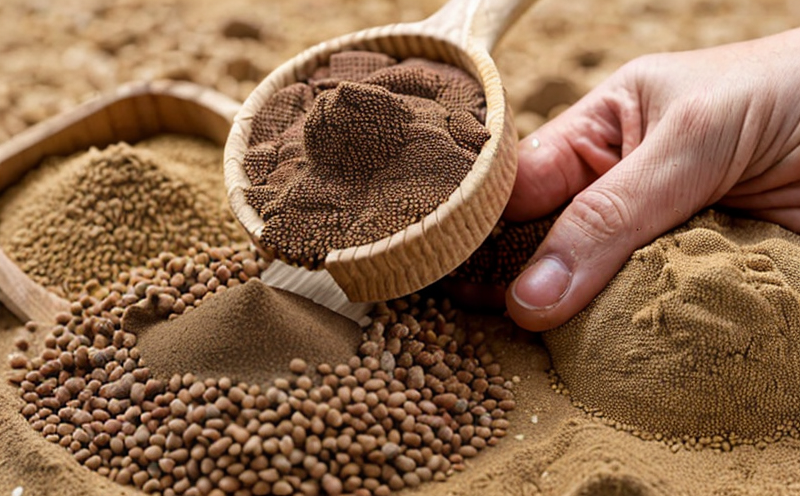Fiber Fraction Testing (NDF, ADF) in Feed
In agriculture and forestry testing, the quality and safety of animal feed are paramount. Fiber fraction analysis using Neutral Detergent Fiber (NDF) and Acid Detergent Fiber (ADF) is a crucial component of ensuring that feeds meet nutritional requirements while minimizing risks to livestock health.
The primary goal of fiber fraction testing in feeds is to assess the digestibility and overall quality of the feed material. This test helps determine how much of the fiber content in the feed can be broken down by rumen microorganisms, which directly impacts an animal’s ability to utilize nutrients efficiently. By accurately measuring NDF and ADF values, laboratories provide valuable insights that aid in formulating balanced diets for various livestock species.
The methodology involves several steps: first, the sample preparation must ensure representativeness of the feed material being analyzed. This typically includes grinding the feed to a standard particle size before conducting the test. Next comes the chemical extraction process where different detergents are used depending on whether you're measuring NDF or ADF.
Understanding these fractions helps farmers and nutritionists make informed decisions about feed composition, ensuring optimal growth rates and health outcomes for their animals. For instance, high levels of non-digestible fiber could indicate poor quality feeds which might lead to digestive issues in ruminants like cattle or sheep.
Moreover, compliance with international standards such as ISO 16953:2017 ensures reliability and consistency across different laboratories worldwide. These standards provide clear guidelines on sample preparation methods, reagents used during extraction processes, and interpretation of results based upon specific criteria.
| Parameter | Description | Unit |
|---|---|---|
| NDF (Neutral Detergent Fiber) | Total fiber content resistant to neutral detergent treatment. | % dry matter |
| ADF (Acid Detergent Fiber) | Fraction of NDF further protected from acid detergent digestion. | % dry matter |
Scope and Methodology
The scope of fiber fraction testing encompasses the evaluation of feed samples according to internationally recognized standards. Here’s a detailed breakdown:
- Sampling: Representative samples are collected from bulk lots or individual packages.
- Precipitation: Samples undergo precipitation steps using neutral detergents and acids.
- Drying: Precipitated materials are dried to constant weight at specified temperatures.
- Weighing: Weight measurements of treated samples serve as basis for calculating NDF and ADF percentages.
Why Choose This Test
- Ensures compliance with international standards like ISO 16953:2017.
- Provides accurate measures of feed digestibility impacting animal health and productivity.
- Aids in optimizing feed formulations for different livestock species.
- Assists regulatory bodies in enforcing quality control measures within the food industry.
- Promotes sustainable agricultural practices by reducing waste through efficient utilization of resources.
Environmental and Sustainability Contributions
Conducting fiber fraction tests contributes significantly towards environmental sustainability efforts. Accurate feed quality assessments help minimize overfeeding, thus reducing uneaten portions that end up as waste. This not only conserves natural resources but also reduces greenhouse gas emissions associated with processing additional feed ingredients.
Furthermore, by promoting the use of sustainable feed practices, laboratories contribute positively to global environmental goals. Efficient utilization of available resources translates into lower carbon footprints and supports the broader objective of responsible resource management in agriculture.





